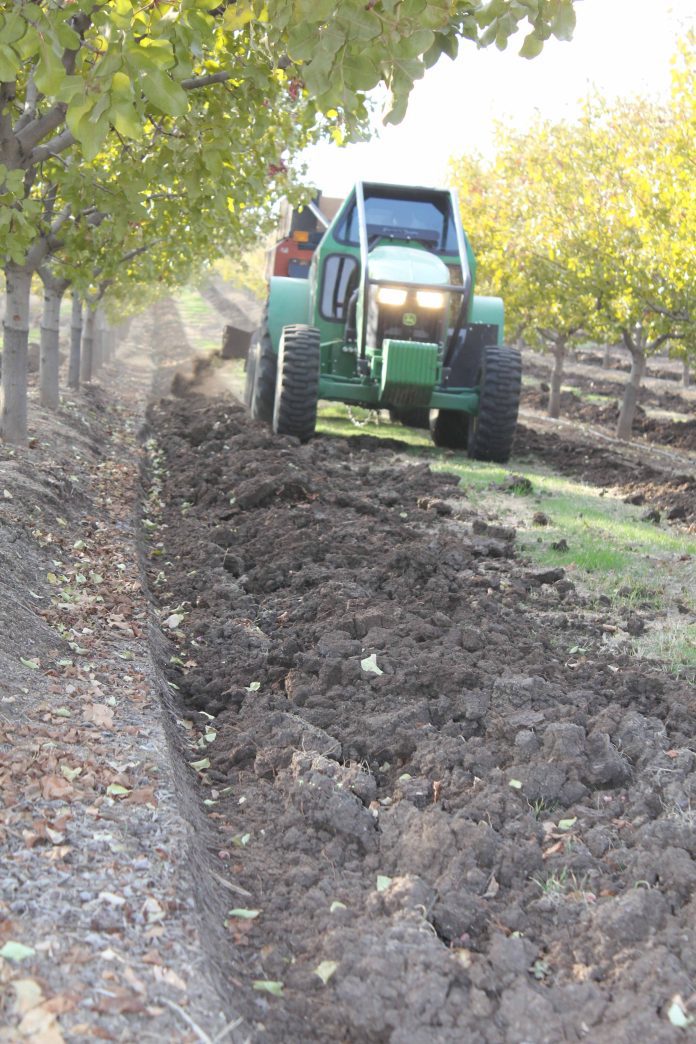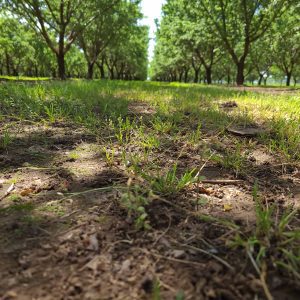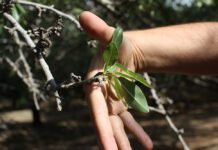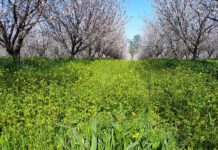
The regulatory environment and diversity of fruit and nut crops is driving research into nitrogen and irrigation management.
At a Kern County workshop that was part of CDFA’S Fertilizer Research and Education Program, UC Davis Agronomist Sat Darshan Khalsa said much of the research being done to improve nitrogen use efficiency and manage irrigation water is aimed at reducing impacts on the environment.
Nitrogen use efficiency studies were initiated, Khalsa said, as higher concentrations were being detected in groundwater. This was due to nitrogen use decades ago, he stressed, and it will take decades to remediate. There are economic and environmental benefits of nitrogen management.
Tree nut growers need to understand N demand by tree type and that it is different from fruit trees as nuts remove more N from the orchard, but they can also lose more N to the environment.
The efficiency factor with N use has improved, Khalsa said. Historically, it was not near 75%, and about half was lost to the environment. Growers are doing much better now as they budget based on tree needs. Making sure the N is in the right place in the orchard when there is tree demand helps avoid loss.
Compost applications in tree nut orchards can also help with nutrition and water holding capacity. Field trials have determined that best practice is a fall compost application on the tree berm at the rate of 7 tons per acre. Khalsa stressed that the compost works as a ‘savings account,” providing a slow release of nutrition while improving soil organic matter. Fall timing is important as nutrients will be available when there is demand. Applications in late winter means mineralization will occur in July when demand is low.
Source of compost is an important consideration and depends on your goals. If tree nutrition is desired, Khalsa recommended dairy-based compost. If soil organic matter is important, he said green waste compost will work. Soil variation will affect applications. Sandy soils will not see the level of benefit from compost that loamy soils will.

Soil Properties and Irrigation Scheduling
Soil texture and structure must be considered when making irrigation management decisions.
Khaled Bali, UCCE irrigation water management specialist, said applying the right amount of water to optimize profit saves water, energy, nutrients and reduces greenhouse gas emissions.
He also noted that an irrigation system’s design and management should be planned with soil physical properties and infiltration rates in mind.
Mohammad Yaghmour, UCCE farm advisor in Kern and Kings counties, said considerations for water budgeting include crop water requirements and irrigation scheduling using Eto, KC, Eta, CIMIS, Tule, plant-based technologies and soil moisture.
He also suggested fine-tuning a water budget using FRET, soil moisture and other technologies.
Irrigation and nutrition management in young trees requires flexibility as they grow. Phoebe Gordon, UCCE farm advisor in Madera and Merced counties, said irrigating young trees is tough.
“You need to be able to hit the target while accurately estimating how much water the trees need, which can change within a year,” Gordon said. Competition with weeds complicates the matter.
Estimating ET needs for an orchard within complete canopy cover can be a challenge. Gordon noted that transpirational demands decrease and evaporation increases in a young orchard. ET isn’t just a factor of shaded canopy cover. Gordon said the rule of thumb is to estimate the shaded cover of the orchard at noon. Multiply that number by two, then multiply that percentage by the weekly ET to get your inches of water per acre. A newly planted orchard may be at 5% to 10% shaded cover. End of first leaf will depend on the crop. For almonds, it may be 15% to 20%. With pistachio, it is likely around 10%.
Targeting the root zones is essential for young trees as it is very limited. Water must be applied right at the root sone for newly planted trees. Gordon said water may move into root zones for bareroot trees, but water will not move into potting media from bulk soil.
To accurately target the root zone with inline drip emitters, Gordon recommended laying the lines before planting, leaving some slack for adjusting. Ensure an emitter is at the base of each tree. For microsprinkler orchards, ensure the emitter pattern matches what is advertised. Gordon warned that low pressure can result in smaller wetted areas. Sprinklers could be changed to drip emitters. Button emitters can be punched in at the base of the tree and expanded out later.
Gordon said that first-leaf trees are not utilizing all the water put out by a microsprinkler or drip system. Applied water may need to increase to compensate and sprinkler caps may concentrate applied water into a smaller area, resulting in the soil profile being filled faster.
For wetted depth, the 50% allowable depletion rule still applies in young orchards, but the working depth may be much less. Consider impeding layers of soil and root growth of the tree species. For almonds and walnuts, that would be about a foot per year. Pistachio trees are phreatophytes, Gordon noted, and will likely root very deeply as fast as possible.
To be sure you are on the right track with irrigation, Gordon recommended augering into the soil. Moisture sensors can be inaccurate in newly planted orchards. Location of the sensor is important. It should be in the immature root zone. Gordon said there may also not be enough sensors to capture local differences in the orchard block. Soils should be checked before and after an irrigation to see how much the water moved. Checking the soil multiple times a year as the canopy develops is also recommended.
For potted trees, check to see if water is getting into the potted media and if roots are growing out. A well irrigated tree should be growing for the majority of the season, Gordon said. Cell division and cell elongation cease when plants are water stressed.
System Evaluation Can Improve Efficiency
Brian Hockett, district manager for the North West Kern Resource Conservation District, emphasized the importance of irrigation system evaluation. Unless the system is maintained, he said distribution uniformity can be affected.
Many growers have converted to pressurized irrigation systems in recent years, Hockett said, because of the advantages. In addition to weed and disease reduction due to smaller wetted areas, the systems can be automated with fertilizers and chemicals applied through the system. Microsystems can operate on hilly terrain with little or no runoff.
These advantages won’t be achieved without system maintenance. Problems frequently encountered include excess pump pressure, dirty cone screens, improperly set regulating valves, plugged hose screens and emitters, and leaky valves and risers.
The average pressurized irrigation system has improved uniformities since 1988 when only 78% of drip and 80% of microsprinkler systems evaluated were operating as designed. Hockett said 90% of drip and 84% of microsprinkler systems evaluated were achieving distribution uniformity.

Cecilia Parsons
Cecilia Parsons has lived in the Central Valley community of Ducor since 1976, covering agriculture for numerous agricultural publications over the years. She has found and nurtured many wonderful and helpful contacts in the ag community, including the UCCE advisors, allowing for news coverage that focuses on the basics of food production.
She is always on the search for new ag topics that can help growers and processors in the San Joaquin Valley improve their bottom line.
In her free time, Cecilia rides her horse, Holly in ranch versatility shows and raises registered Shetland sheep which she exhibits at county and state fairs during the summer.















